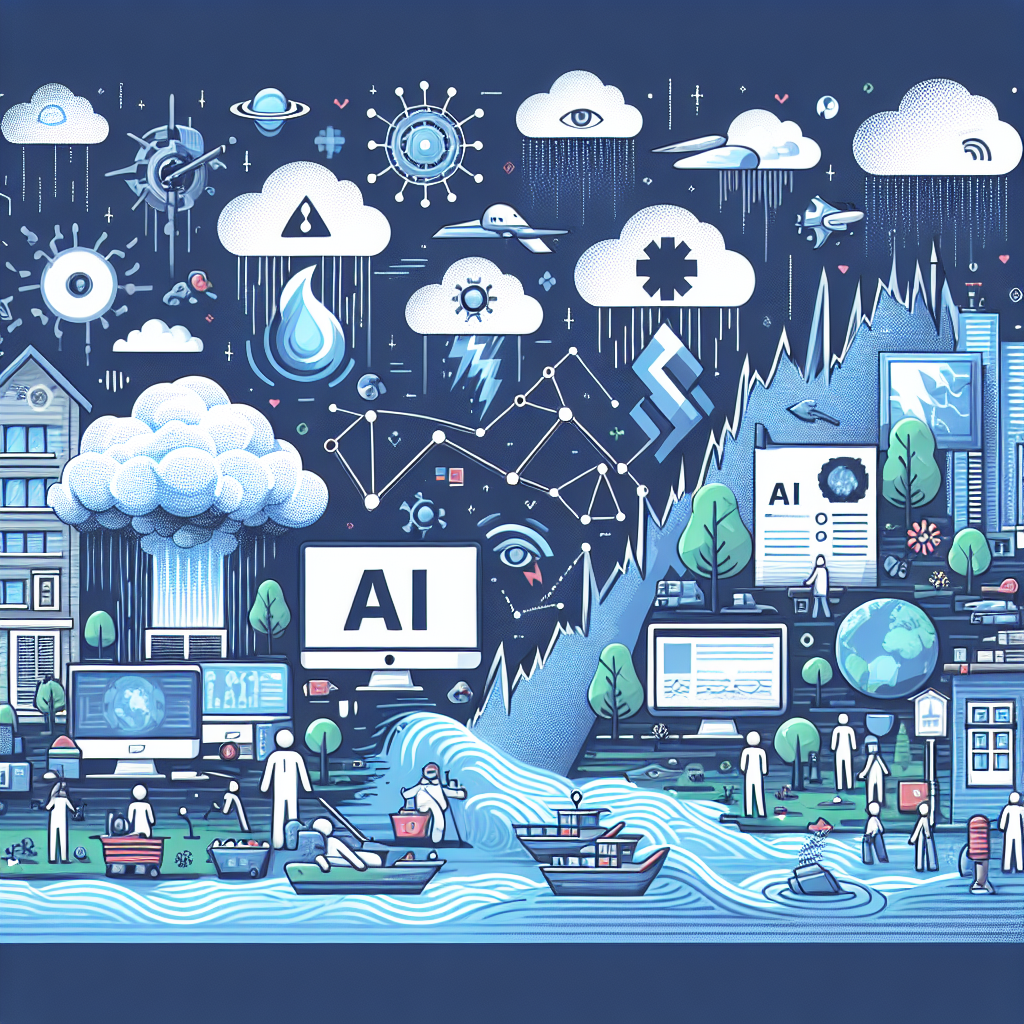The Role of AI Solutions in Disaster Response
In recent years, the frequency and intensity of natural disasters have been on the rise, posing significant challenges to emergency response teams and humanitarian organizations. In times of crisis, it is crucial to have effective and efficient mechanisms in place to respond to disasters and provide timely assistance to those affected. This is where artificial intelligence (AI) solutions come into play, offering a range of capabilities that can help improve disaster response efforts.
AI technology has the potential to revolutionize disaster response by enhancing decision-making processes, improving situational awareness, and optimizing resource allocation. With the ability to analyze vast amounts of data in real-time, AI systems can provide valuable insights that can help emergency responders make informed decisions and take quick action in the face of a crisis.
One of the key ways in which AI solutions are being used in disaster response is through predictive modeling. By analyzing historical data and weather patterns, AI systems can forecast the likelihood of a disaster occurring in a specific location, allowing authorities to take proactive measures to mitigate its impact. For example, AI-powered predictive models can help predict the path of a hurricane or the likelihood of a flood, enabling authorities to evacuate residents and allocate resources in advance.
AI solutions can also be used to improve situational awareness during a disaster. By analyzing satellite imagery, social media feeds, and other sources of data, AI systems can provide real-time updates on the evolving situation on the ground, helping emergency responders understand the scope and severity of the disaster. This information can be crucial in determining where to deploy resources and how to prioritize response efforts.
Furthermore, AI systems can assist in optimizing resource allocation during a disaster. By analyzing data on the availability of resources, such as emergency supplies and medical personnel, AI solutions can help authorities allocate resources more efficiently to areas that are most in need. This can help ensure that resources are distributed equitably and that those affected by the disaster receive the assistance they need in a timely manner.
In addition to these capabilities, AI solutions can also help improve communication and coordination among different stakeholders involved in disaster response efforts. By analyzing communication patterns and identifying key decision-makers, AI systems can help streamline the flow of information and ensure that all parties are on the same page. This can help prevent miscommunication and ensure a more coordinated and effective response to the disaster.
Overall, AI solutions have the potential to significantly enhance disaster response efforts by providing valuable insights, improving situational awareness, optimizing resource allocation, and facilitating communication and coordination among stakeholders. As the technology continues to advance, it is likely that AI will play an increasingly important role in disaster response efforts, helping to save lives and minimize the impact of disasters on communities around the world.
FAQs
Q: How can AI solutions help predict natural disasters?
A: AI solutions can analyze historical data and weather patterns to forecast the likelihood of a disaster occurring in a specific location. By identifying key indicators and trends, AI systems can help authorities take proactive measures to mitigate the impact of a disaster.
Q: How can AI solutions improve situational awareness during a disaster?
A: AI solutions can analyze satellite imagery, social media feeds, and other sources of data to provide real-time updates on the evolving situation on the ground. This information can help emergency responders understand the scope and severity of the disaster and make informed decisions about how to allocate resources.
Q: How can AI solutions assist in optimizing resource allocation during a disaster?
A: AI solutions can analyze data on the availability of resources and help authorities allocate them more efficiently to areas that are most in need. By identifying areas that require urgent assistance, AI systems can help ensure that resources are distributed equitably and that those affected by the disaster receive the help they need in a timely manner.
Q: How can AI solutions improve communication and coordination among stakeholders during a disaster?
A: AI solutions can analyze communication patterns and identify key decision-makers to help streamline the flow of information and ensure that all parties involved in disaster response efforts are on the same page. This can help prevent miscommunication and ensure a more coordinated and effective response to the disaster.

